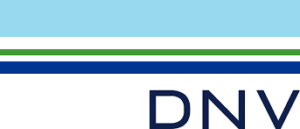
DNV has sent out a news update on amendments to the International Code for the Safe Carriage of Grain in Bulk, which have been adopted by IMO Resolution MSC.552(108).
The Grain Code amendments enter into force 1 January 2026 and will be applicable to newbuildings with keel laid on or after this date. For existing ships, the amended Grain Code can also be applied to improve loading flexibility and demonstrate compliance with the new requirements. It is expected that there will be an increased attention on this loading pattern by inspectors in the larger grain exporting ports from 2026.
The need to implement such an update for existing ships will largely depend on the individual ship’s cargo capacity, the maximum draught, and the specific gravity of the type of grain typically carried. If a ship, when operating at its normal/ fixed grain trade, can consistently load all holds fully – with untrimmed ends – without exceeding the maximum loadline draught, or only rarely encounters a fully loaded condition where one hold is partial filled within the hatch, such an update may not be necessary.
DNV says it is also worth noting that trimming can still be performed for a partial filled hold – where the grain level is below the hatch coaming – if such a service is available in the port.
Background
Currently, the Grain Code offers three official loading patterns for grain in each cargo hold:
- Full hold, trimmed ends
- Full hold, untrimmed ends
- Partly filled hold
For a partly filled hold, the grain surface is assumed to be “trimmed” to an approximate even surface at any loading level, also when the hold is near full. This implies that the space underneath the deck, fore and aft of the hatch, socalled ends, must also be trimmed for levels inside the hatch perimeter. As a result, the grain must be manually shuffled up under the end girders to reduce the void.
Since trimming the ends is labour-intensive, it is not always carried out. When trimming is omitted in partly filled holds, the actual voids in the ends are larger than those assumed by following the current calculation method. As a result, the actual grain shifting moment will be larger than the calculated value.
New Grain Code amendments
To address this, a fourth permissible loading pattern has been introduced to the new Grain Code amendments:
- Partly filled hold, in way of the hatch opening, ends untrimmed
This means that if the final filling level of a cargo hold is inside the perimeters of the hatch coaming, measured from the lower level of the hatch end beams and upwards, the ends do not need to be trimmed. The grain surface shall form a natural slope from either the hatch end beam or from the feeding holes in the end girder, depending on the filling height (a 30-degree slope is assumed in the calculations).
Read the news update with diagrams: DNV – Amendments of the International Code for the Safe Carriage of Grain in Bulk